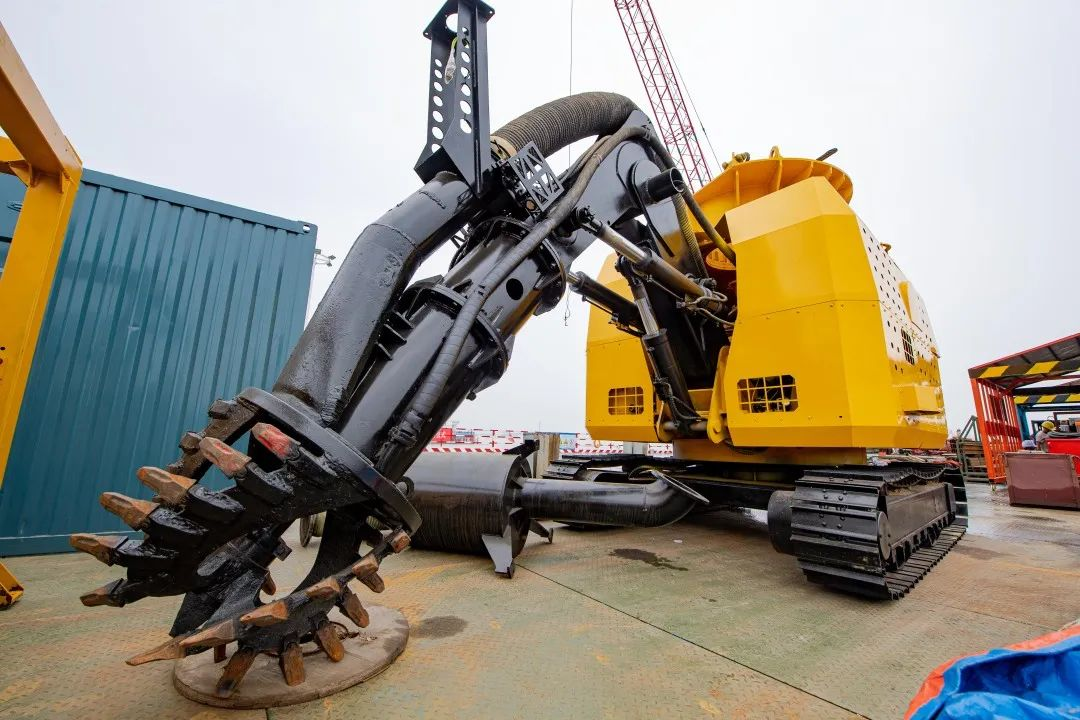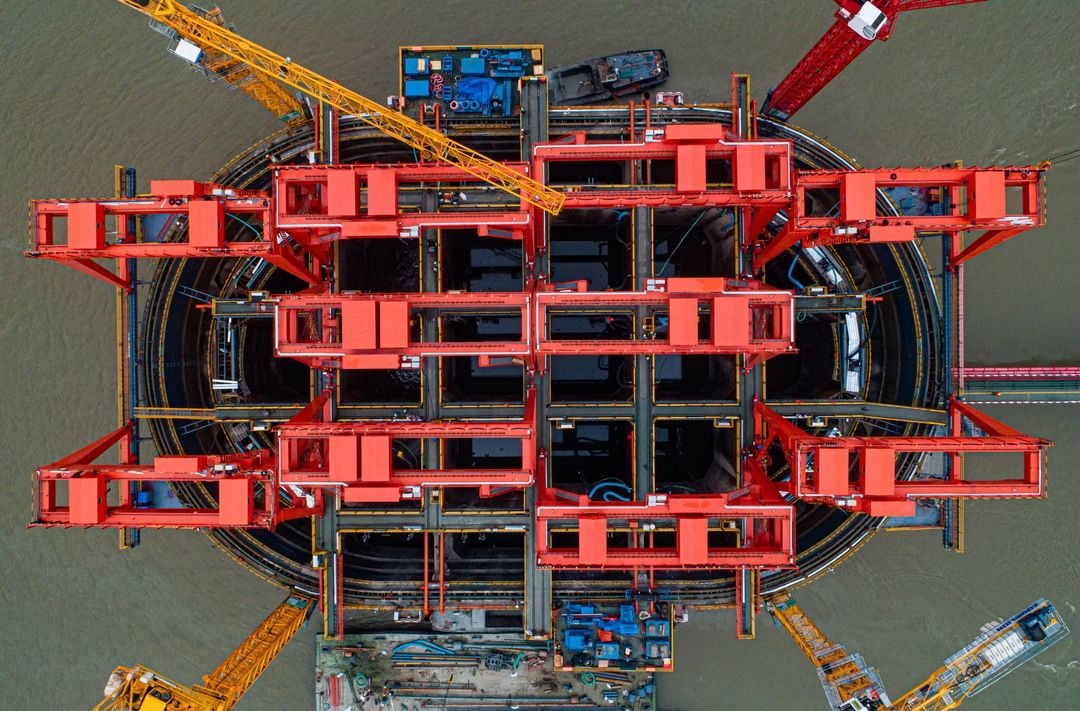Changtai Yangtze River Bridge: Pioneering Intelligent Underwater Engineering with Submerged Foundation Robotics
2020-08-19

The Changtai Yangtze River Bridge is the first cross-river channel on the Yangtze River to integrate expressways, intercity railways, and general roads. With a total length of 10.03 kilometers, it features a dual-layer continuous steel truss girder spanning 4,266 meters. The total steel bridge deck area exceeds 250,000 square meters, equivalent to 33 standard football fields, with an average paving thickness of 6-6.8 cm.
Located between the Taizhou Yangtze River Bridge and the Jiangyin Yangtze River Bridge, this engineering marvel connects Changzhou and Taizhou in Jiangsu Province. As the world's longest-span cable-stayed bridge, its foundation required an innovative approach due to the limitations of traditional bored pile construction in meeting load-bearing demands. The solution: caisson foundations supported by intelligent submerged robots, heralding a new era of "smart manufacturing" in underwater caisson construction.

Intelligent Caisson Robotics: Revolutionizing Submerged Soil Removal
The Changtai Yangtze River Bridge employs rounded-end caisson foundations, each requiring 23,000 tons of steel—more than three Eiffel Towers—and covering an area equal to 13 basketball courts, making it the world' s largest submerged caisson foundation.
While the massive caissons provide stability for the 1,208-meter bridge's main channel span, placing these structures in the Yangtze River posed extraordinary challenges.
From Traditional Air-Lift Excavation to Visualized Soil Removal
In the past, caisson excavation relied on vertical conduits and air-lift methods, requiring significant experience and risking uneven soil removal and caisson tilting. To address these issues, the engineering team spent two years developing an intelligent caisson robot that enables precise, visualized soil removal.
This robot is equipped with sonar and high-definition cameras capable of operating in turbid waters. Operators can monitor real-time underwater conditions and adjust the robot's position using onboard distance meters and detection tools.
The robot's tank-like tracked wheels ensure stability on uneven riverbeds, while its drilling head and suction capabilities break and extract hard soil or rock layers. Debris is efficiently pumped out of the caisson through pipelines. An 18 MPa high-pressure water jet enhances its ability to penetrate compact soil, while a 380-cubic-meter suction pump ensures soil removal efficiency of up to 200 cubic meters per hour.
360-degree rotating and extendable robotic arms, combined with sonar and video monitoring, allow for precise and uniform soil removal, ensuring the caissons settle evenly and securely.
Advanced Deepwater Capabilities
One of the robot's standout features is its exceptional deep-water operation capacity. Constructed from 304 stainless steel, it ensures motor functionality at depths of up to 200 meters. Material enhancements and innovative hydraulic systems enable the robot to perform reliably in complex underwater conditions, boosting construction efficiency and safety.
Efficiency Gains
Traditional suction equipment typically required six operators per work site and achieved only 40 cubic meters per hour. With the intelligent robot, a single operator can manage the process remotely, increasing efficiency by 4 to 6 times, achieving 200 cubic meters per hour.
Supporting Changtai Yangtze River Bridge' s Completion
With the assistance of the intelligent caisson robot, the construction team completed the excavation and positioning of the main tower caissons two months ahead of schedule, ensuring the stability and durability of the bridge' s foundation.
The primary and auxiliary components of the Changtai Yangtze River Bridge are now complete, with final stages including tower crane dismantling, acceptance inspections, and dynamic/static load testing underway. Once operational later this year, the bridge will reduce travel time between Changzhou and Taizhou to just 20 minutes, injecting new vitality into regional transportation efficiency.

Next
2022-12-28 - VVLAI: 3500m Deep Sea Robot Achieves 98% Domestically
A groundbreaking underwater observation and operational robot, fully hydraulic and multi-functional, has successfully passed testing. Designed to operate at depths of up to 3,500 meters, the robot can perform underwater searches, explosive disposal, offshore engineering tasks, and pipeline inspections. This cutting-edge device was developed independently by Shandong Future Robotics Co., Ltd. in just one year, achieving a remarkable 98% domestically sourced component rate.
Previous
2018-09-28 - The Underwater Multi-functional Robot Achieves a Complete Success in Sea Trials
In September 2018, the underwater multi functional robot custom-made by our company for China Yangtze Power Co., Ltd. (hereinafter referred to as "China Yangtze Power")